What to Watch For: Practical Decision-Making in Games 3 and 4
After the challenger, GM Tan Zhongyi, took an early lead in the FIDE Women’s World Chess Championship match, WGM Sabina Foisor and I looked at three emerging storylines from the match on Saturday's rest day.

Since then, GM Ju Wenjun bounced back with a win on Sunday, while Tan missed some chances to push harder on Monday, leaving the match tied at 2–2. Play resumes on Wednesday, April 9, after today’s rest day. After Thursday’s sixth game, the match takes a two day break as players travel from Shanghai to Chongqing for the second half of the match, which resumes on Sunday, April 13.

Foisor's full annotations from games 3 and 4, also embedded at the end of this article, are worth a careful read, and we’ve pulled a few key moments out of them to discuss here.

Before game 3 began, we were wondering what new themes would emerge. Instead, it turned out to be more rewarding to reflect on how the same three battles are playing out. On the board, many key moments are coming down to the players’ ability to navigate tension between general principles and concrete specifics of the position. So, we will first look at moments where the unprincipled choice paid off, followed by moments where the principled decision was the way to go.
Then, especially as these games continue to remain sharp deep into the endgame, those pesky psychological factors keep showing up. How hard should you push for a win before a rest day? How do you manage to thread the needle between “staying active” and “rushing” when pawn-up? So, that will again be our third topic. Let’s take a look!
1. Looks can be deceiving
We have all been guilty of going on autopilot in the opening, placing a piece on a square where it “looks active” or should be well-placed, only to be proven wrong. Once again, Tan is showing her understanding of the Sicilian by avoiding falling into this dangerous way of thinking. In the below diagram, how would you develop Black’s light-squared bishop?

Tan chose the correct 12. … Be6, avoiding the alluring 12. … Bb7. But, as Foisor notes, 13. Qb3 Bxc3 14. Qxb7 Be5 15. Bg5 Re8 16. Rad1 puts White in a better position to punish the isolated d5-pawn. The light-squared bishop is superficially passive on the e6-square, sure, but limiting the effectiveness of White’s rook on the open e-file is important. Plus, as we’ll see later, the threat of … d5-d4 will change our evaluation of the bishop.
In the next diagram, from early in the fourth game, many of us would have “clicked” the e3-bishop in an online blitz game before considering any alternative moves. Some of us might even physically touch the bishop over the board.
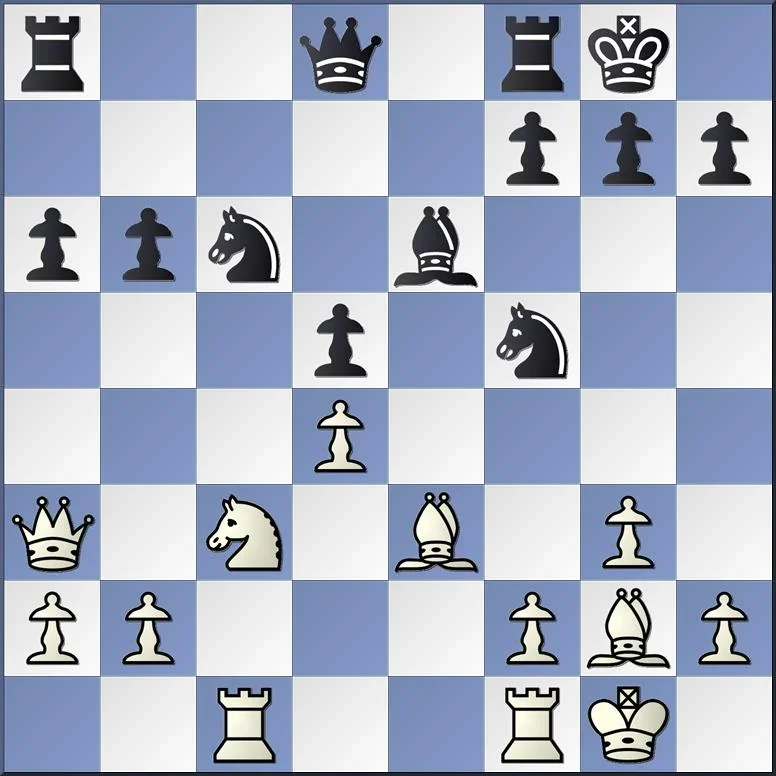
Here, Tan was guilty of over-estimating the need to keep the bishop pair. After 18. Bf4 Nfxd4 19. Rfd1, Black had a chance to equalize with 19. … Qf6!, defending the d4-knight while keeping the threat of an annoying … g7-g5 thrust that would punish White’s dark-squared bishop.
Instead, Foisor took the time to seriously consider 18. Ne2!?, introducing the option of Qa3xe3 while rerouting the knight to the kingside. Even after 18. … Na5, provoking 19. b3 Nxe3 20. fxe3, Foisor writes that, “Despite returning the bishop pair, White has much better-placed pieces, while Black's d5-pawn and a5-knight keep Black more passive.” Indeed, there is no way to punish the backwards e3-pawn, either, and White’s position is much easier to play with the dark-squared bishop no longer getting in the way.
2. Trust Your Gut (Sometimes)
In a famous episode of Seinfeld, the character George Costanza realizes that his gut instincts aren’t just usually wrong, but rather that they are so wrong that he can live a lucratively successful life simply by doing the opposite of whatever his instinct tells him to do.
Is the game of chess turning into a similar situation, where we should always be placing pieces on awkward-seeming squares and parting with strategic advantages such as the bishop pair?
Of course not! Let’s take a look at some moments where the principled decision was the correct one, starting with the below diagram from Sunday’s game:
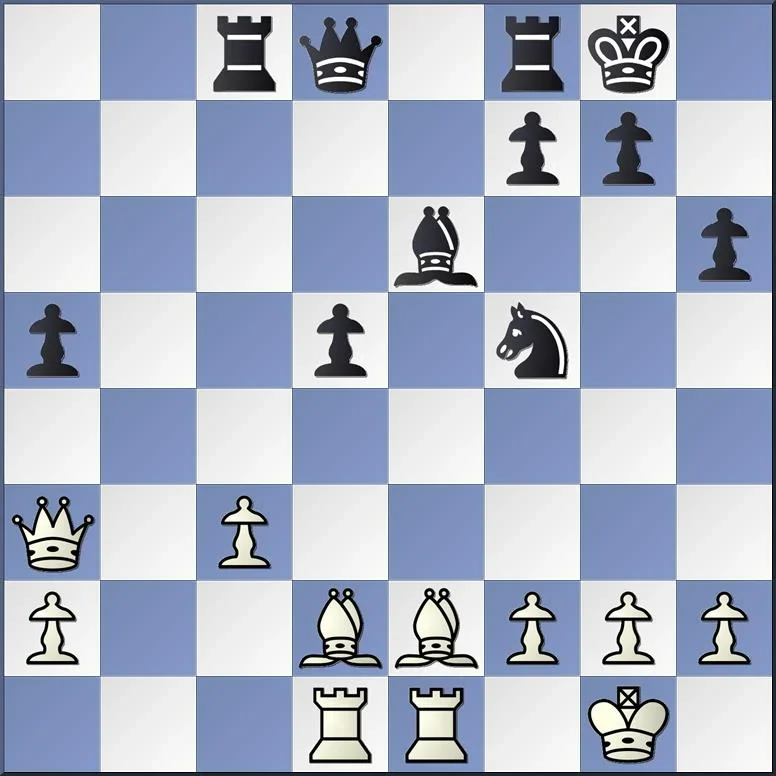
In our last article, we discussed a position from the first game where Tan was comfortable with her isolated d5-pawn staying on the board, whereas more classical players such as GMs Judit Polgar and Peter Heine Nielsen were both looking for an opportunity to get rid of it with the thematic … d5-d4 break.
In that game, we praised Tan’s resolve. But, here, she chose to offer a queen trade (despite having the isolated d-pawn!) with 20. … Qd6. This was shocking, as 20. … d4 is once again begging to be played. As Foisor noted in her analysis, Black is totally fine if White trades pawns. More importantly, Black is also doing very well after 21. h3 Qf6! putting more pressure on the c-pawn, intending … Rf8-d8 and … Nf5-h4 with serious attacking chances stemming from her space advantage.
This is a familiar way to attack with the space advantage after the … d5-d4 break, and it’s hard to see either what Tan was worried about in this variation, let alone why she’d prefer trading queens to this position.
In our next position, from later in the same game, what would you play as Black?
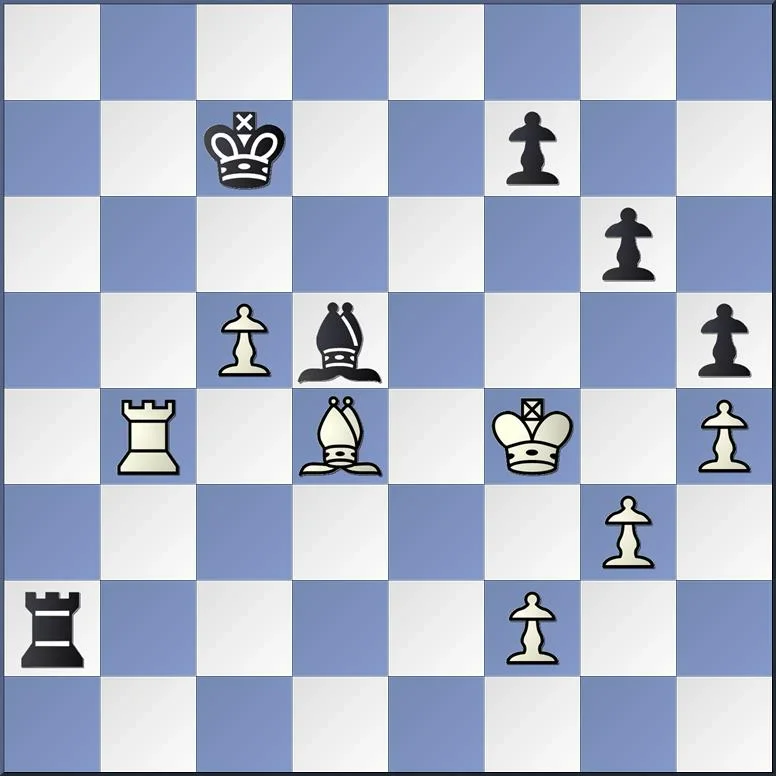
The engine recommends 60. … Re2, but the more important point was that Tan’s 60. … Bc6?? gave White a practically winning position. The point is that White’s plan is clear: activate her king by reaching the f6-square.
Given this, Black’s priority should be making sure her light-squared bishop stays on the a2-g8 diagonal. White’s king’s activity is not so dire from the f6-square when the f7-pawn is defended. Plus, with a rook on the e-file, Black prevents White’s rook from reaching the e7-square (which proved fatal in the game). No amount of calculation trying to defend 60. … Bc6 can make up for the point that this move neither covers the e-file nor keeps the defense of the f-pawn.
Finally, here’s one position from yesterday’s game that could be described either as principled or anti-principled, depending on your mood. Should White take the b6-pawn?
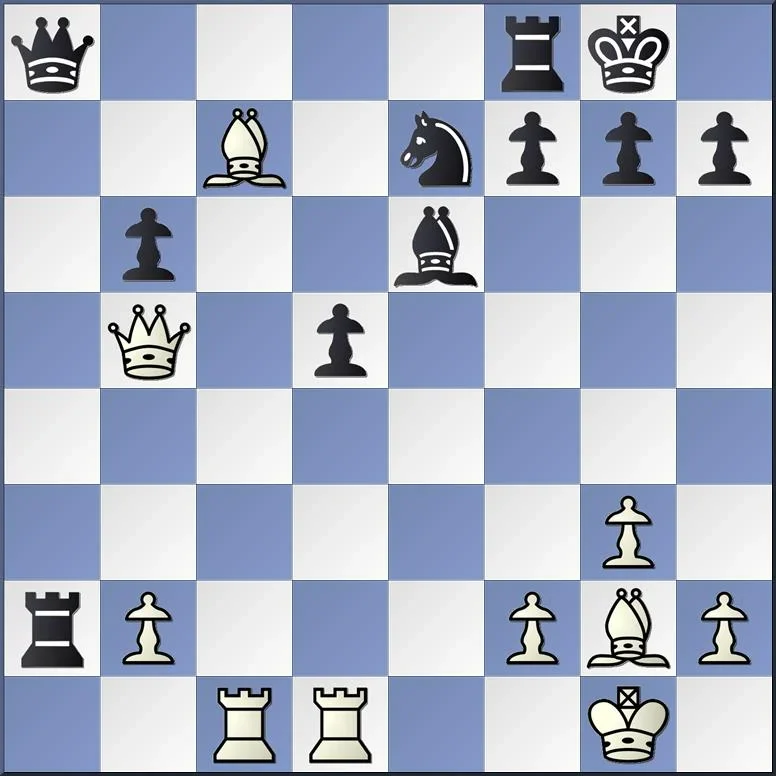
White played 24. Bd6?, after which Black mostly equalized (although White still wound up with chances to apply pressure later on). Greedily grabbing the pawn with 24. Bxb6 is unprincipled for a reason, walking into 24. … Rb8 and leaving White forced to untangle from the pin.
But what about taking with the queen? Indeed, 24. Qxb6! was just a pawn. We are warned against capturing poisoned pawns, after which our queen might waste valuable tempi retreating to safety. So, maybe this is also an unprincipled move. But a pawn is a pawn, and it’s not at all obvious how Black manages to punish White’s queen here. After 24. … Rc8 25. b4 Ra6 26. Qd4, White’s dark-squared bishop is still restricting Black’s rook on the open file.
Additionally, the b-pawn is very safely defended by White’s queen, who has managed to centralize herself quite nicely. The lone “kick” of 25. … Ra6 actually improved the position of White’s queen, in other words, so what was White afraid of when considering 24. Qxb6!, then?
3. The Mental Game
After Tan’s win, Foisor posed some interesting questions in her annotations about whether you’d prefer to have a rest day immediately after winning (or losing) a game. Would you want to keep the momentum from the win, or is the rest welcome? Would you appreciate the day to “reset” after a loss, or do you want to get back out there to redeem yourself?
As Tan started gravitating towards winning chances late in yesterday’s game, we reached an interesting corollary of this question: how important is it to push hard for a win the day before a rest day?
On the one hand, why not push as hard as you can when you don’t have another grueling game ahead of you? But, at the same time, your opponent is already the one who will feel like they “dodged the bullet” and will have to work hard on the rest day to prepare more for the next rounds. Why give them the chance to instead feel proud of themselves for defending heroically when you yourself can end the game with the psychological advantage of knowing that you’re the one setting the pace?
We saw this dilemma most clearly towards the end of the fourth game. What would you play in the below position?

After Tan’s 56. Ra1, Ju had time with 56. … Ke6 to prepare … Rd5-d7. She was able to hold without much further difficulty. Had White pressed with the immediate 56. f4, as Foisor pointed out, this would prevent Black’s knight from having contact with the d7-square. Something like 56. … Ng6? 57. Ra1! simply wins, while 56. … Nc6 57. Kc4 Rd2 58. Ra1 is an improved version of the game. Black’s coverage of the a7-square is precarious, and her grip of the d7-square is no firmer.
There might not be a clear win for White in that line, but at least there’s not a clear drawing mechanism for Black. So, why didn’t Tan push? Of course, the answer has to be in part that she either overestimated her chances after 56. Ra1 or underestimated her position after 56. f4.
More generally, it can be difficult to commit to pawn pushes in an endgame, and such irreversible decisions can feel riskier than they actually are as a result. In other words, her tolerance for risk likely was not very high based on some of the psychological factors discussed above. Perhaps those factors even played a part in her either overestimating her move or underestimating the alternative. Nobody ever said it was easy to be objective in the fourth hour of a world championship chess game.
Rewinding the game a bit, let’s take a look at a moment right before the time control when Tan was not afraid to push a pawn. What do you think of her 39. b4 here?
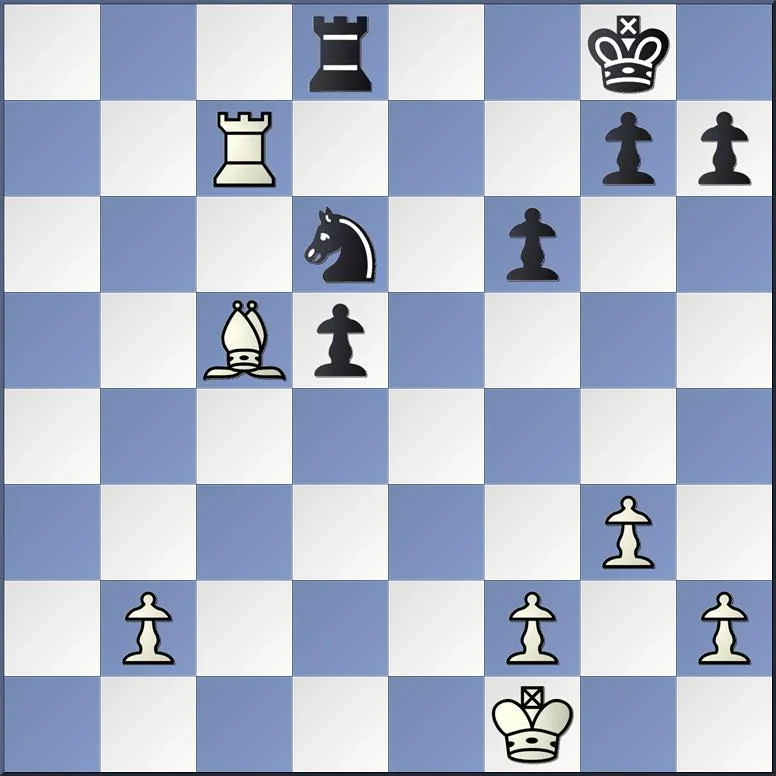
White is still better after 39. b4, and Foisor sagely warns us of the dangers of giving too much credence to the engine’s preference for other moves. But the engine’s favorite move, 39. Ke2!?, follows an endgame principle of centralizing the king as well as the more general maxim of “do not hurry” when trying to convert an advantage.
The point is clearest after 39. … Ne4 40. Kd3!, when the active king discourages … Ne4xc5 ideas, as the isolated d-pawn falls. Foisor gives the line 40. … Rd7!? 41. Rc6 Rb7 42. b4 when, compared to the game, White’s king is just one move away from terrorizing Black’s vulnerable d-pawn. The king is also closer to the passed b-pawn, showing the principle of two weaknesses in full effect.

There isn’t too much use in armchair psychology, but, based on the principled justifications behind 39. Ke2, we have to wonder whether Tan would have rushed things with 39. b4 had she not been under the pressure of trying to regain her lead in the match. And given that this turned out to be a bit hasty, did she in turn hesitate a bit more than she otherwise would have when evaluating 56. f4 in the previous position?
We’ll never know, but at least we will continue to have a rich, combative match. With each game, the two players are pushing each other deeper into their preparation and into more complex and lively endgames. If these trends keep up, we are in for even more instructive and entertaining games after today’s break.
Below, enjoy WGM Sabina Foisor's annotations for games 3 and 4 in full:
Stay tuned to Chess Life Online for more coverage, resuming Wednesday, April 9, with annotations from game 5.
Categories
Archives
- December 2025 (5)
- November 2025 (29)
- October 2025 (39)
- September 2025 (27)
- August 2025 (29)
- July 2025 (43)
- June 2025 (25)
- May 2025 (24)
- April 2025 (29)
- March 2025 (29)
- February 2025 (20)
- January 2025 (24)
- December 2024 (34)
- November 2024 (18)
- October 2024 (35)
- September 2024 (23)
- August 2024 (27)
- July 2024 (44)
- June 2024 (27)
- May 2024 (31)
- April 2024 (51)
- March 2024 (34)
- February 2024 (25)
- January 2024 (26)
- December 2023 (29)
- November 2023 (26)
- October 2023 (37)
- September 2023 (27)
- August 2023 (37)
- July 2023 (47)
- June 2023 (33)
- May 2023 (37)
- April 2023 (45)
- March 2023 (37)
- February 2023 (28)
- January 2023 (31)
- December 2022 (23)
- November 2022 (32)
- October 2022 (31)
- September 2022 (19)
- August 2022 (39)
- July 2022 (32)
- June 2022 (35)
- May 2022 (21)
- April 2022 (31)
- March 2022 (33)
- February 2022 (21)
- January 2022 (27)
- December 2021 (36)
- November 2021 (34)
- October 2021 (25)
- September 2021 (25)
- August 2021 (41)
- July 2021 (36)
- June 2021 (29)
- May 2021 (29)
- April 2021 (31)
- March 2021 (33)
- February 2021 (28)
- January 2021 (29)
- December 2020 (38)
- November 2020 (40)
- October 2020 (41)
- September 2020 (35)
- August 2020 (38)
- July 2020 (36)
- June 2020 (46)
- May 2020 (42)
- April 2020 (37)
- March 2020 (60)
- February 2020 (38)
- January 2020 (45)
- December 2019 (34)
- November 2019 (35)
- October 2019 (42)
- September 2019 (45)
- August 2019 (56)
- July 2019 (44)
- June 2019 (35)
- May 2019 (40)
- April 2019 (48)
- March 2019 (61)
- February 2019 (39)
- January 2019 (30)
- December 2018 (29)
- November 2018 (51)
- October 2018 (45)
- September 2018 (29)
- August 2018 (49)
- July 2018 (35)
- June 2018 (31)
- May 2018 (39)
- April 2018 (31)
- March 2018 (26)
- February 2018 (33)
- January 2018 (30)
- December 2017 (26)
- November 2017 (24)
- October 2017 (30)
- September 2017 (30)
- August 2017 (31)
- July 2017 (28)
- June 2017 (32)
- May 2017 (26)
- April 2017 (37)
- March 2017 (28)
- February 2017 (30)
- January 2017 (27)
- December 2016 (29)
- November 2016 (24)
- October 2016 (32)
- September 2016 (31)
- August 2016 (27)
- July 2016 (24)
- June 2016 (26)
- May 2016 (19)
- April 2016 (30)
- March 2016 (36)
- February 2016 (28)
- January 2016 (32)
- December 2015 (26)
- November 2015 (23)
- October 2015 (16)
- September 2015 (28)
- August 2015 (28)
- July 2015 (6)
- June 2015 (1)
- May 2015 (2)
- April 2015 (1)
- February 2015 (3)
- January 2015 (1)
- December 2014 (1)
- July 2010 (1)
- October 1991 (1)
- August 1989 (1)
- January 1988 (1)
- December 1983 (1)







